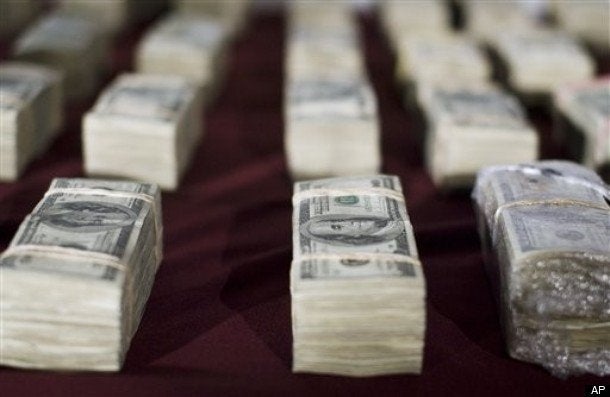
Only $100 billion of the $787 billion stimulus package passed nine months ago has actually been spent by the federal government so far, with another $90 billion of stimulus coming in the form of tax reductions, the nonpartisan Congressional Budget Office reported Monday evening. That leaves three quarters of the package -- and its stimulative effects -- yet to come.
Slow as that pace may seem, it's in line with initial CBO estimates.
But much of the spending hasn't had the full impact it could, the report says, because "it appears that stimulus funds substituted for some spending from regular appropriations."
Despite the limitations, the CBO estimates that between 600,000 and 1.6 million people were employed in the third quarter of 2009 who otherwise would not have been. The spending and tax cuts raised the Gross Domestic Product by somewhere between 1.2 and 3.2 percent, it found, and reduced unemployment by 0.3 to 0.9 percent.
In Washington, the stimulus is often discussed as if the entire $787 billion was all spent on the first night -- with some pundits expressing shock and dismay that the economy hasn't already bounced back as a result. That three quarters of the stimulus has yet to be felt undermines their positions.
Shortly after the stimulus was passed, the GOP began declaring it a failure, a conclusion the party has stuck to since - even if some officials take credit for what it's accomplishing when they're back at home
Democrats in Congress have been stung by the criticism and even while pushing for more stimulus spending have worked hard to avoid calling it a stimulus, dubbing it a "jobs" bill instead.
Michael Steel, a spokesman for Minority Leader John Boehner (R-Ohio), told HuffPost Monday night that he's not buying the CBO estimate.
"The White House claimed that if we passed the trillion-dollar 'stimulus' unemployment would stay below 8 percent and jobs would be created 'immediately.' Instead, unemployment is over 10 percent, more than three million more Americans are out of work, and folks are asking 'where are the jobs?'" he wrote in an e-mail.
The White House had been mocked for its flawed reporting of how many jobs the stimulus created - which included jobs in congressional districts that don't actually exist. But the CBO said it used a different model than relying on the word of bureaucrats.
"Estimating the law's overall effects on employment requires a more comprehensive analysis than the recipients' reports provide," the CBO said. "Therefore, looking at the actual amounts spent so far (where identifiable) and estimates of the other effects of ARRA on spending and revenues, CBO has estimated the law's impact on employment and economic output using evidence about how previous similar policies have affected the economy and various mathematical models that represent the workings of the economy. On that basis, CBO estimates that in the third quarter of calendar year 2009, an additional 600,000 to 1.6 million people were employed in the United States."
That could be a tremendous underestimate, as the CBO's thinking doesn't take into account the possibility that the economy might have fallen off a cliff if the stimulus hadn't been passed, with world markets panicking and employers continuing to eliminate jobs at an eye-popping pace.
Similarly, the reason the CBO failed to predict the rise in unemployment that has taken place since February is that the model it uses doesn't take into account the fact that the banking system collapsed.
